In Oklahoma, going birding in the woods and forests is the greatest method to view woodpeckers. However, several species, including Downy, Northern Flickers, Red-bellied, and Hairy, can frequently be spotted on backyard feeders.
Even though woodpeckers peck between 8,000 and 12,000 times every day, their precise design and constant development prevent their beaks from wearing out.
The Red-bellied Woodpecker is the most prevalent woodpecker in Oklahoma in both the summer and the winter.
In Oklahoma, the Red-headed Woodpecker is more frequently observed throughout the summer, whilst the Northern Flicker and a number of other species are more frequently observed during the winter.
If you want to learn about different species of woodpeckers in Oklahoma, then this ultimate guide will help you know everything about them.
| Image | Name |
|---|---|
 | Red-bellied Woodpecker |
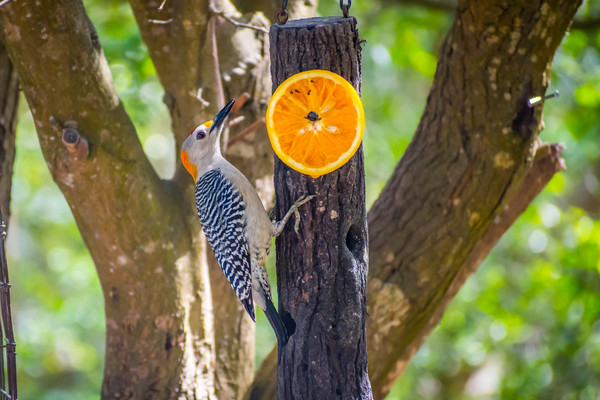 | Golden-Fronted Woodpecker |
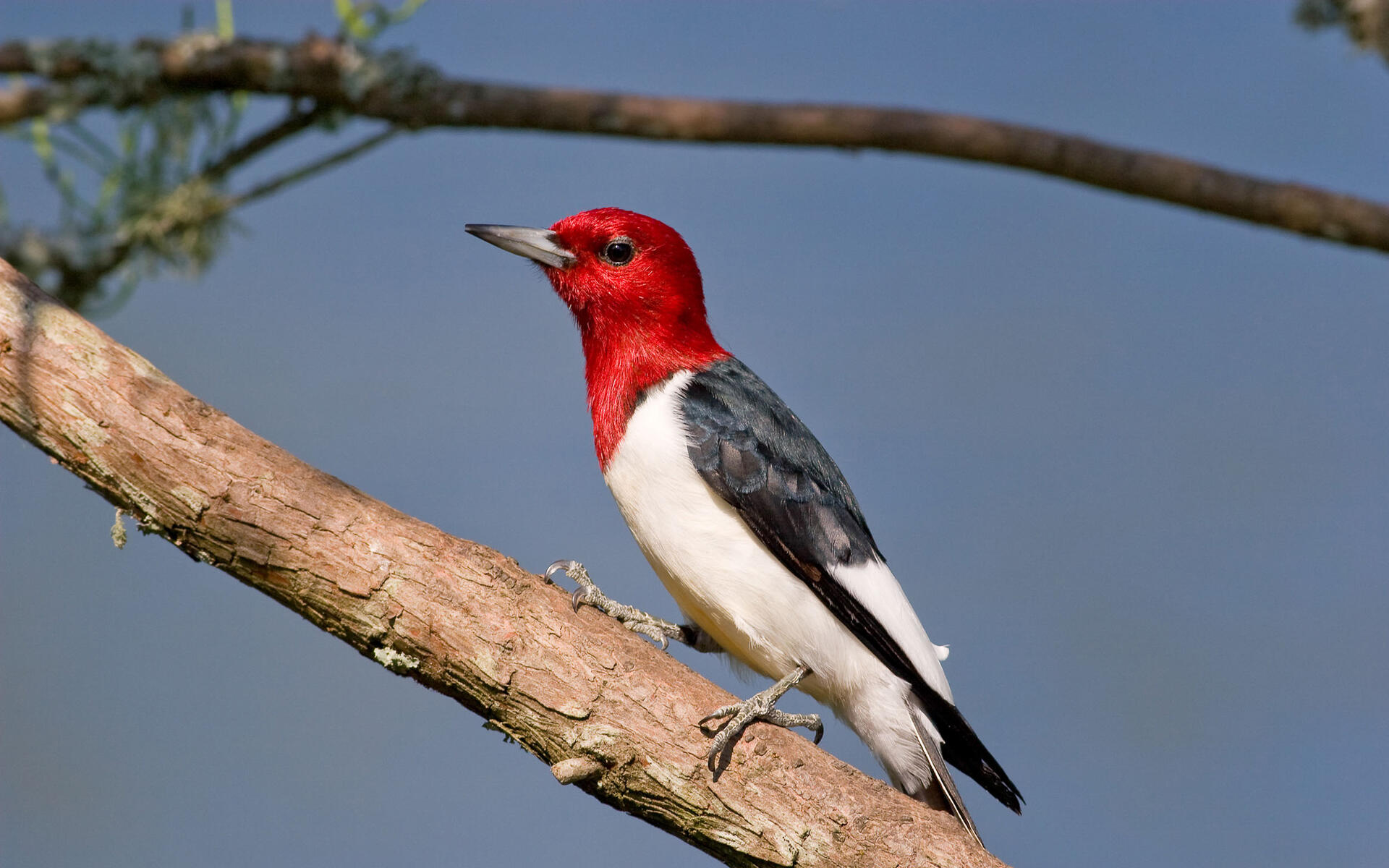 | Red-Headed Woodpecker |
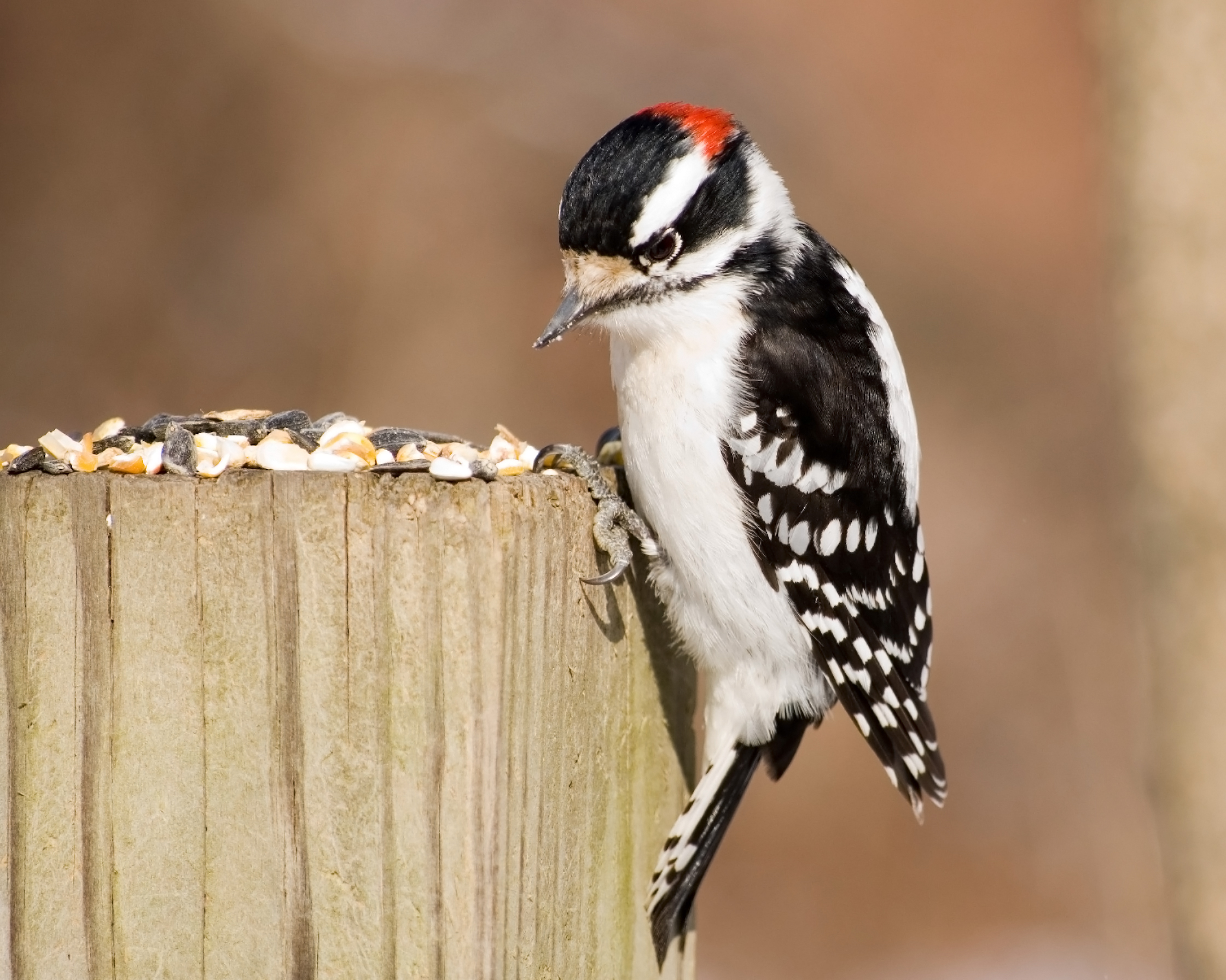 | Downy Woodpecker |
 | Northern Flicker |
 | Lewis's Woodpeckers |
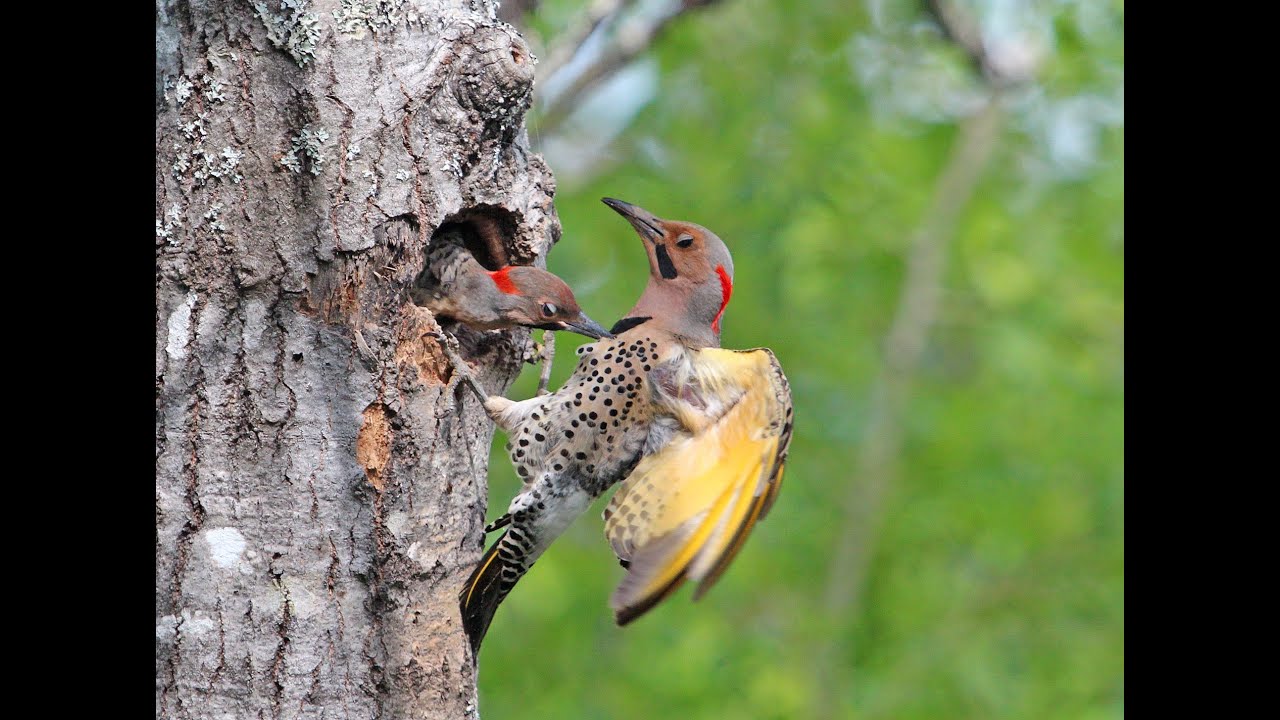 | Red and Yellow-Shafted Northern Flicker |
Different Species of Woodpeckers In Oklahoma
1. Red-bellied Woodpecker
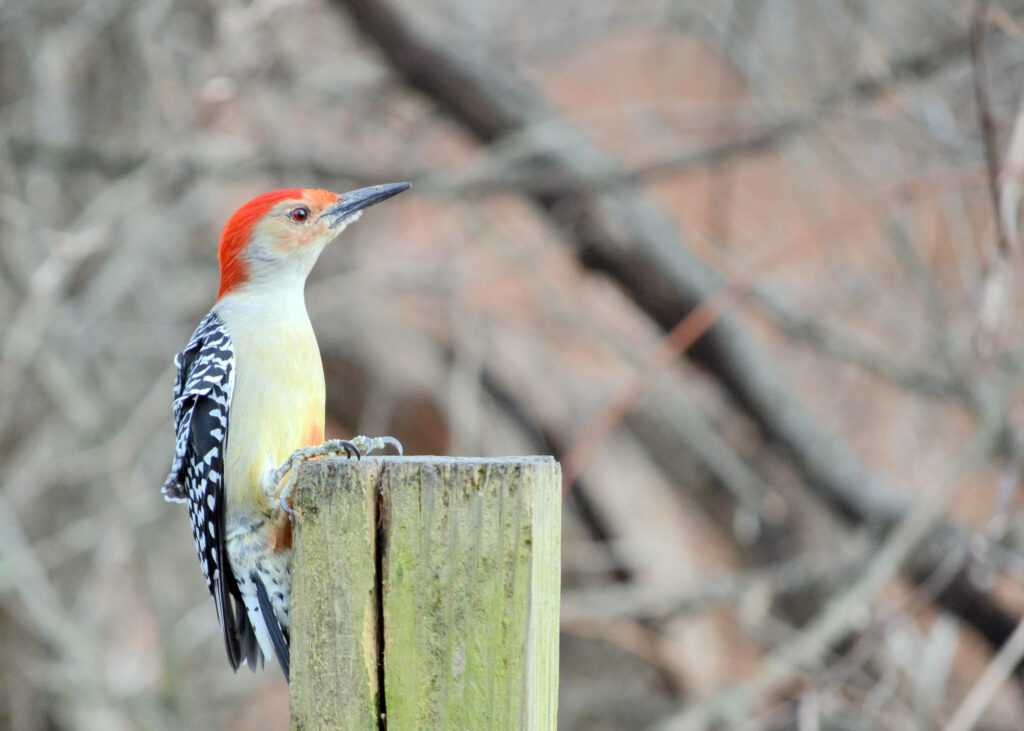
Red-bellied Woodpeckers have black and white striped backs with peachy-red heads and napes. Throughout the majority of Oklahoma, these woodpeckers may be seen perched on the main branches and trunks of trees all year long in backyards and forests.
Finding these birds is made easier by being familiar with their loud, rolling call. They are known to leave the forest and go to household bird feeders.
Habitat & Food
To draw them in, use suet blocks during the winter, peanuts, and perhaps sunflower seeds. They are drawn to dead trees because of the insects within.
Particularly if you live close to forested regions, woodpeckers can frequently be spotted at bird feeders. Because of their characteristic booming rolling cry, you frequently hear them before you see them.
The Red-bellied Woodpecker’s tongue protrudes 2 inches over the beak and is barbed and covered with sticky spit at the tip. This aids in catching prey hidden in deep crevices.
They eat insects, spiders, seeds from grasses, fruit, and nuts. They will occasionally devour nestlings as well. They may reuse the same nest year after year and build their nests on dead trees. On a bed of wood chips, they lay four to five white eggs.
2. Golden-Fronted Woodpecker

It is another species of woodpecker with medium-sized black tail feathers, a white rump, a black and white striped back, and a black beak. Southwest Oklahoma and sections of Texas are home to this species, which is commonly mistaken for a red-bellied woodpecker there.
Food
Insects, nuts, and fruits make up the majority of the Golden-fronted woodpecker’s diet, although it also occasionally eats reptile and bird eggs. These birds are known to frequent parks and residential areas and are not shy.
Both species have a subtle golden tinge that gives them an almost luminous appearance. Their wings are banded in black and white and have a pale gray main body.
Habitat
These birds often inhabit brushy areas, tropical woods, and woodland settings, although if suet is available, you could occasionally see them in suburban yards and parks. These birds may be audible before they are seen.
They are rather talkative in the morning, especially in the spring, and have a powerful call. Additionally, they don’t fear people, so if any are around, it won’t be difficult to find them.
3. Red-Headed Woodpecker
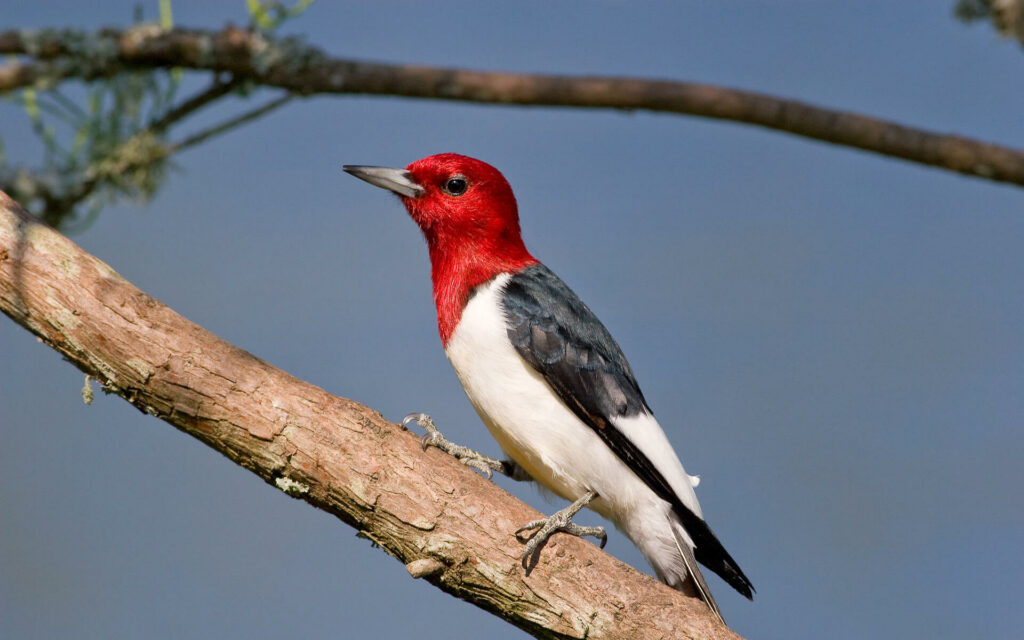
Red-headed While woodpeckers may be found across Oklahoma year-round, the winter months see most of them in the state’s eastern region. These woodpeckers are among the simplest to recognize due to their vivid redheads and distinct black and white patterns.
Medium-sized Red-headed Woodpeckers have strong spike bills. They have short tails, huge white stripes on the wings, black backs, and white undersides.
Red-headed Woodpeckers have a loud cry, nest in tree cavities, occasionally utilizing the same location again, and lay four to five white eggs.
Unfortunately, between 1966 and 2014, habitat degradation resulted in significant losses in the Red-headed Woodpecker population by 70%. In the eastern and central US states, red-headed woodpeckers may be found.
Depending on acorn yields, those in the north and east of the range could move even further east and south. They will aggressively protect their territory, including taking or destroying other birds’ or ducks’ eggs.
Food
Like other woodpeckers, Red-headed Woodpeckers collect insects both in flight and in crevices. Only around one-third of their food is made up of insects, including beetles, midges, grasshoppers, and honeybees.
The Red-headed Woodpecker will also steal eggs or nestlings from other birds and occasionally even from mice.
4. Downy Woodpecker

In Oklahoma, Downy Woodpeckers are the second-most frequent woodpecker species to be sighted in the summer and winter.
They are widespread here and are listed in 19% of summer checklists and 25% of winter checklists for the state. Although it resembles the Hairy Woodpecker in appearance, it is smaller and has a smaller beak than other woodpeckers.
In dead tree cavities, downy woodpeckers build their nests and lay three to eight tiny (0.8 in.) white eggs.
Food
The major foods that downy woodpeckers consume are insects, particularly larvae and nuts, along with berries, acorns, and cereals.
They can occasionally be spotted consuming liquids from hummingbird feeders. Due to their greater prevalence, Downy Woodpeckers are more likely to be seen at feeders.
Range
Downy Woodpeckers may be found all across North America, including the US. They are not present in the northern part of Canada or along the southern border with Mexico.
Bird feeders in the backyard are frequented by Downy Woodpeckers. They are quite active and emit a high-pitched sound as well as the falling whiny cry.
Compared to the Hairy Woodpecker, which is identical in appearance and sound, they create a little slower drumming noise that allows you to hear more of the individual drums.
They are typically spotted at feeders and may be found in open forests, parks, orchards, and yards. In addition, they are visible among high weeds.
5. Northern Flicker

Between September and April, Northern Flickers travel to Oklahoma, where they spend the winter. They have a black-spotted plumage, a white patch on their rump when flying, and red nape.
Some of them remain here during the summer since this is the southern limit of their summer nesting territory. Although they are common across the US and Canada, those that breed there travel south for the winter.
A piercing shriek is a common sound and a loud ringing cry is produced by Northern Flickers. They deposit 5-8 white eggs and build their nests in tree crevices.
Food
They often dig up ants, beetles, fruits, and seeds with their bent beak and are frequently spotted doing so on the ground.
Compared to lesser woodpeckers, Northern Flickers are fairly big woodpeckers, and as such, their drumming is deafening. Open forests, forest margins, parks, and suburbia are all good places to spot Northern Flickers.
They frequently scavenge for food on the ground. The ideal option is to install a beautiful pedestal birdbath or a heated birdbath during the winter because Northern Flickers visit birdbaths more frequently than bird feeders.
6. Lewis’s Woodpeckers

This medium-sized bird, which inhabits the western half of the US, makes its annual winter migration from the north to the south. They spend the entire year in the Oklahoma Panhandle’s farthest westernmost point.
These charming woodpeckers are distinguished from other species by their green and pink coloration, red cheek, and white neck.
Food
It also prefers to grab flying insects, which distinguishes it from the majority of other woodpeckers. They hunt for insects crawling on the bark rather than pecking or digging into the wood as other woodpeckers do.
This diligent bird gathers acorns and other nuts as fall approaches and deposits them in tree cavities so they have food for later. Lifelong partners establish nests in excavated trees or utility poles.
7. Red and Yellow-Shafted Northern Flicker
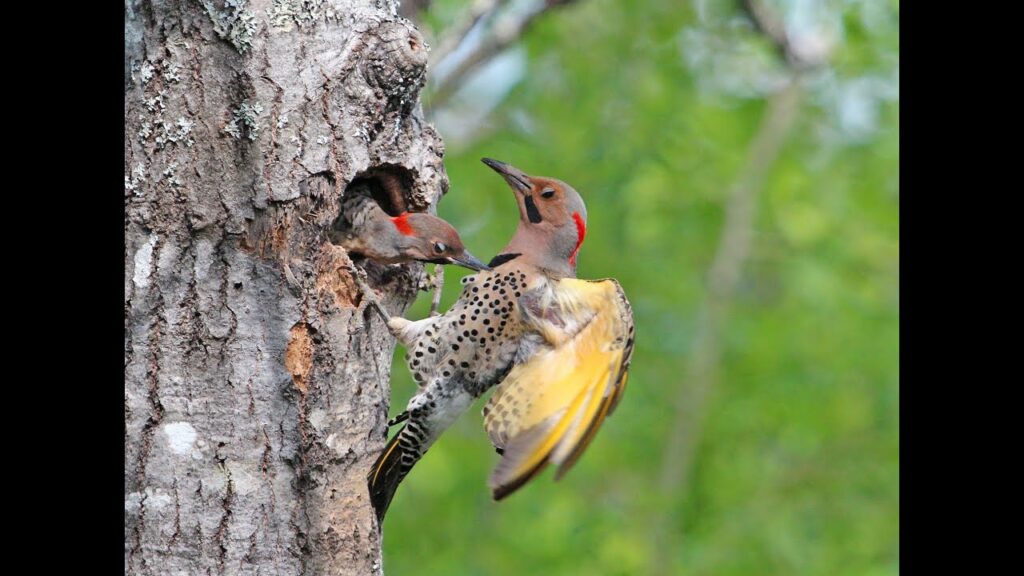
Both red and yellow-shafted Northern flickers can be seen in Oklahoma in the winter. The eastern region of the state is home to the more prevalent yellow-shafted flicker, while the less frequent red-shafted Northern flicker is mostly found in the west.
The Northern Flicker digs its tongue into ant nests that it discovers on the ground and in fallen trees. But when it visits residential areas in Oklahoma, this bird dips its bill into suet-filled feeders.
Conclusion
This was a guide about different species of woodpeckers in Oklahoma. We shared their details and information about their habitat along with their living style.
For more, see FAQ.
FAQ
What is the name of a black-and-white woodpecker?
The appearance of Downy Woodpeckers is striped in black and white. The wings have white checks on the black upper parts, the head is strongly striped, and the back has a wide white stripe running down the middle. The rear of the head is covered with a tiny red patch in males.
What does the presence of a woodpecker indicate?
The woodpecker frequently serves as a metaphor for the fresh changes that present themselves in our life. It serves as a reminder that we must seize these chances or risk remaining uneducated and stagnant.
Last Updated on March 22, 2023 by Lily Aldrin
